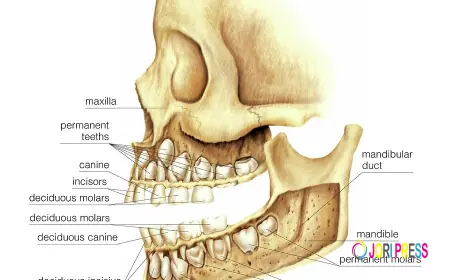Rhythm in Motion: Reps2Beat and the Evolution of Beat-Speed Training

James Brewer - Founder Reps2Beat And AbMax300
Fitness training has traditionally been measured by repetitions, sets, resistance, and time under tension. Yet, one of the most powerful variables has been hiding in plain sight: rhythm. From the natural cadence of footsteps during a jog to the beat of music pulsing in the background of a gym, rhythm has always influenced how people move.
What if rhythm could be more than background motivation? What if it could serve as a structured training tool? This is the vision brought to life by James Brewer, athlete, certified trainer, and innovator of the Reps2Beat (R2B) Training System.
By synchronizing exercises with musical beats, Brewer created a system where beats per minute (BPM) act as a form of resistance—progressively scaled to enhance performance. With the addition of the AbMax300, his co-designed training device, Brewer turned rhythm into a revolutionary method for building endurance and efficiency.
The Science of Rhythm and Human Performance
Brewer’s R2B is not just motivational—it is deeply scientific. It is based on the principle of rhythmic entrainment, a neurological response where humans unconsciously synchronize movement with rhythm.
Why Rhythm Matters in Training
-
Energy Conservation: Syncing movements to beats reduces wasted effort.
-
Consistency: Beats enforce steady pacing.
-
Reduced Fatigue: Studies show music lowers perceived exertion.
-
Enhanced Coordination: Rhythm aligns body and mind for fluid motion.
Research by Karageorghis & Priest (2012) highlighted that music operates as both a psychological stimulant and an ergogenic aid, improving performance across endurance and strength-based activities.
James Brewer’s Breakthrough
Brewer’s personal journey demonstrates the power of R2B. Initially, he struggled to perform more than 50 sit-ups in one attempt. By applying rhythm to his sessions, he quickly saw exponential growth.
-
Within weeks, he achieved 1,800 consecutive sit-ups.
-
Inspired by the official world record, he tested his performance at higher tempos.
-
In just a month, Brewer completed 2,640 sit-ups in one hour, surpassing the record of 2,238.
This wasn’t just about breaking records—it was proof that tempo-driven training could transform human capability.
The Absolute Beat-Speed Principle (ABSP)
At the core of R2B is the Absolute Beat-Speed Principle, which redefines intensity using music tempo. Instead of adding weight or volume, progression is achieved by increasing BPM.
-
60–80 BPM: Introductory level for beginners.
-
90–110 BPM: Intermediate level for stamina and rhythm alignment.
-
120–140 BPM: Advanced intensity for peak performance.
Just as progressive overload builds strength, ABSP scales endurance and speed by training the body to operate at faster rhythms.
The 8-Week Beat-Speed Progression Plan
Brewer designed a structured progression model to help athletes adapt.
-
Weeks 1–2: Start at 60–70 BPM to build rhythm awareness and technique.
-
Weeks 3–4: Increase to 80–90 BPM, improving consistency and stamina.
-
Weeks 5–6: Train at 100–110 BPM, challenging endurance and flow.
-
Weeks 7–8: Push intensity to 120–130 BPM, targeting peak efficiency.
This system offers scalable adaptation, ensuring both beginners and advanced trainees see progress.
The Role of the AbMax300
Brewer’s innovation extended to equipment with the AbMax300, a sit-up training device designed to complement R2B. Its features include:
-
Supportive posture design, minimizing injury risk.
-
Targeted endurance training, helping users achieve 300+ sit-ups.
-
Accessibility for all fitness levels, from novices to elite athletes.
With a reported 90% success rate, the AbMax300 has become a cornerstone tool for those committed to beat-speed training.
Psychological Benefits of Beat-Speed Training
While the physical benefits are clear, the psychological impact of R2B is equally powerful:
-
Flow State Engagement: Aligning with rhythm reduces the perception of effort.
-
Motivation Boost: Music enhances mood, keeping athletes engaged.
-
Long-Term Adherence: Enjoyable, rhythm-based workouts increase consistency.
The synergy of body, rhythm, and psychology makes R2B more sustainable than many traditional programs.
Applications Across Fitness and Health
One of the strengths of R2B is its adaptability across different populations:
-
Beginners: Slow tempos help establish form safely.
-
Recreational trainees: Mid-range tempos increase stamina.
-
Athletes: High BPM sessions optimize performance and precision.
-
Rehabilitation patients: Controlled tempos promote recovery.
-
Group classes: Collective rhythm fosters energy and unity.
This versatility ensures that R2B is not a niche method but a universally adaptable training system.
The Future of Reps2Beat Training
The next frontier for R2B lies in integration with modern technology:
-
Wearable devices that track BPM adherence in real time.
-
Adaptive AI playlists that shift tempo based on fatigue or performance.
-
Rehabilitation programs for physical therapy patients using tempo as a recovery tool.
-
Virtual group training, where synchronized music creates global communities.
As fitness becomes increasingly digital, R2B’s rhythm-based structure aligns perfectly with these innovations.
Conclusion
James Brewer’s Reps2Beat system has proven that rhythm is more than motivation—it is a scientific variable for performance. His achievements, the Absolute Beat-Speed Principle, and the AbMax300 device all demonstrate that structured tempo can be just as impactful as traditional variables like weight or time.
Reps2Beat represents a paradigm shift in how we think about fitness, making rhythm not just the soundtrack but the foundation of performance training.
References
-
Karageorghis, C. I., & Priest, D. L. (2012). Music in the exercise domain: A review and synthesis. International Review of Sport and Exercise Psychology, 5(1), 44–66.
-
Men’s Journal. (2020). The Sit-Up World Record and How to Break It.
-
Neuroscience News. (2021). How Rhythmic Music Impacts Human Movement.
-
Brewer, J. (n.d.). Reps2Beat Official Training Guide.
-
American College of Sports Medicine. (2023). The Role of Music in Physical Training Programs.
What's Your Reaction?
 Like
0
Like
0
 Dislike
0
Dislike
0
 Love
0
Love
0
 Funny
0
Funny
0
 Angry
0
Angry
0
 Sad
0
Sad
0
 Wow
0
Wow
0

















































